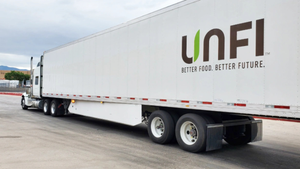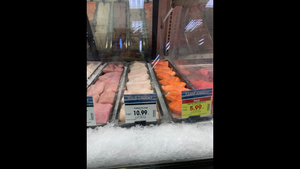California Rolls Out New Refrigeration Regulations
SACRAMENTO, Calif. — In an effort to reduce leaks of refrigerant gases that contribute significantly to global warming, the California Air Resources Board (ARB) here is rolling out unprecedented state regulations on supermarkets and other facilities that use commercial refrigeration systems. The regulations, launched in January 2011 but scheduled to ramp up on Jan. 1, 2012, apply to any business using
November 14, 2011
MICHAEL GARRY
SACRAMENTO, Calif. — In an effort to reduce leaks of refrigerant gases that contribute significantly to global warming, the California Air Resources Board (ARB) here is rolling out unprecedented state regulations on supermarkets and other facilities that use commercial refrigeration systems.
The regulations, launched in January 2011 but scheduled to ramp up on Jan. 1, 2012, apply to any business using more than 50 pounds of refrigerants with high global warming potential (GWP); these refrigerants include the HCFCs (hydrochlorofluorocarbons) and HFCs (hydrofluorocarbons) commonly used by food retailers.
The initial regulations include periodic leak inspection (annually, quarterly or monthly, depending on size), repairs, retrofit or retirement plans, required service practices and recordkeeping; any detected leaks must be repaired within 14 days of discovery. Adding 5 pounds or more of refrigerant, or 1% or more, would trigger a leak inspection under the rules.
The new requirements taking effect in January will apply to about 2,000 facilities with greater than 2,000 pounds of high-GWP refrigerant, including some supermarkets. In addition to paying annual dues ($370), the affected businesses have until March 1 to register with the ARB and submit an annual report on their refrigerant usage. Their facilities must operate a leak detection system that uses sensors or diagnostic equipment, though “a lot of supermarkets already have [a leak detection system] in their mechanical room,” noted Yvette DiCarlo, the ARB's outreach lead for the refrigeration management program.
In January 2014, about 8,500 facilities with between 200 and 2,000 pounds of refrigerant (including many supermarkets) will be required to register, report on usage, and pay an annual fee of $170; in January 2016, about 15,500 facilities with greater than 50 but less than 200 pounds must register but won't have to pay a fee or submit reports.
The ARB is working with 35 local “air districts” in California on what penalties will be exacted for failing to comply with the regulations, said DiCarlo.
POTENT GASES
The ARB rules target what it calls the largest source of highly potent greenhouse gases. For example, a leak of just 1.5 pounds of an HCFC supermarket refrigerant like R-22 is equivalent to releasing a metric ton of carbon dioxide. By applying the rules, the ARB expects to eliminate 8.1 million metric tons of carbon dioxide by 2020, the equivalent of removing about 1.4 million cars from the road for a year. In addition to supermarkets, the regulations cover cold storage warehouses, food and beverage processors, and industrial cooling processes.
On a federal level, the Environmental Protection Agency regulates only ozone-depleting refrigerants such as R-22 under section 608 of the federal Clean Air Act. High-GWP refrigerants such as HFCs (often employed as a replacement for R-22) are not controlled under section 608 since they don't deplete the ozone layer. By contrast, the California law covers both HFCs and HCFCs under its high-GWP criteria.
California retailers are viewing the regulations as a way to prevent costly losses of refrigerant and refrigerated products, said DiCarlo. “The feedback is these leak checks help prevent inefficient systems from leaking refrigerant.” According to the ARB, the regulations are expected to produce an average savings of roughly $2 per metric ton of carbon dioxide equivalent reduced.
Keilly Witman, manager of the EPA's GreenChill program, pointed out that refrigerant leaks have a real financial impact on food retailers. “You have to sell almost 20,000 gallons of milk to pay the refrigerant replacement costs of a 100-pound leak,” she said. GreenChill recently released a “Financial Impact Calculator” that enables retailers to make this type of comparison (see story, Page 30).
Fresh & Easy Neighborhood Market, El Segundo, Calif., which operates about 128 small-format stores in California, has installed leak detection in every store and uses Verisae Refrigerant Management Software to manage and track its leaks and repairs, said Steve Hagen, the chain's procurement and engineering director. “In the initial adoption [of the ARB regulations], I believe our store would have been excluded based on size and refrigerant charge; however, we are already in compliance.”
The ARB's regulations are part of a range of measures developed under AB 32, California's pioneering climate change law enacted in 2006 to reduce the state's greenhouse gas emissions to 1990 levels by 2020. The law includes a cap-and-trade system that does not apply to supermarkets.
While only California businesses are impacted by AB32, the Golden State has been known to set environmental standards adopted by other states. For example, in 2002, California passed the Clean Cars Law, the first binding limits on global warming pollution from tailpipes. Thirteen states adopted those standards, though it took until 2009 for the EPA to allow their implementation. In 2009, the Obama administration also announced an agreement with states and automakers to put in place a national clean car program in model years 2012 to 2016 based on the California standards.
About the Author
You May Also Like






